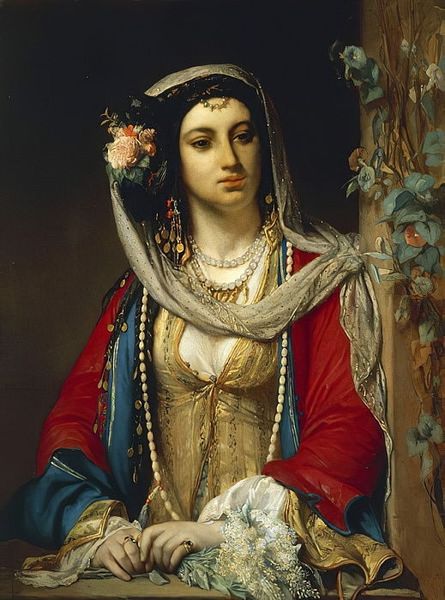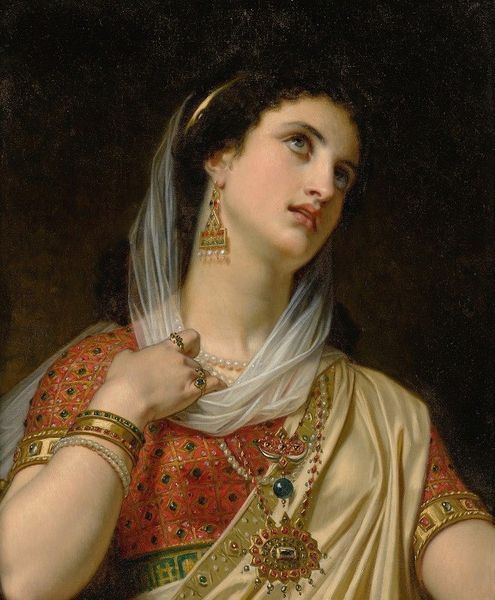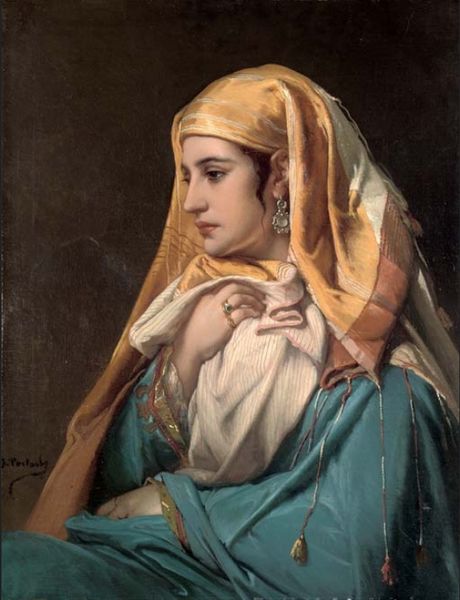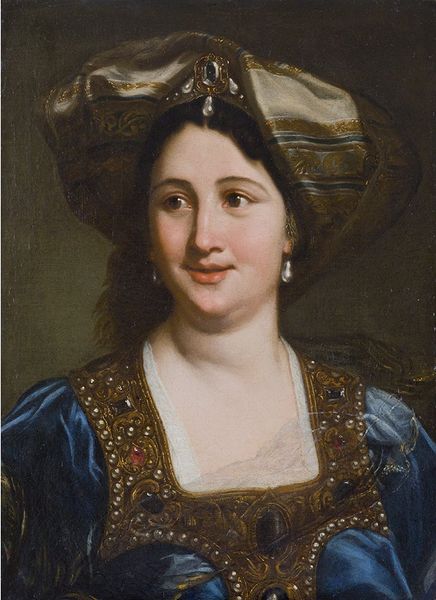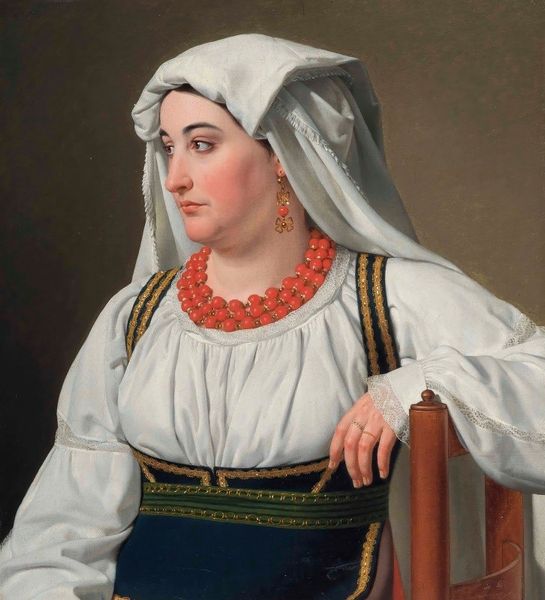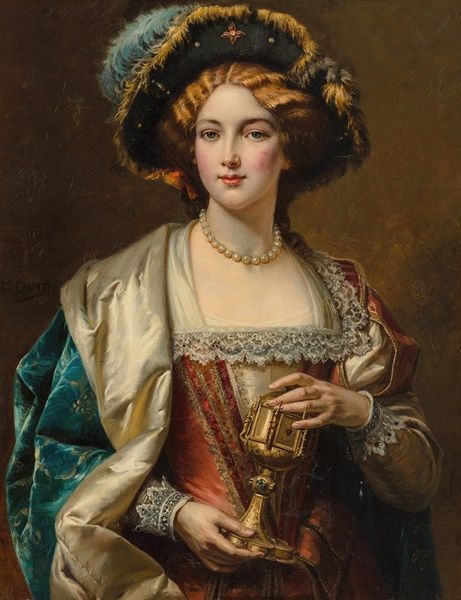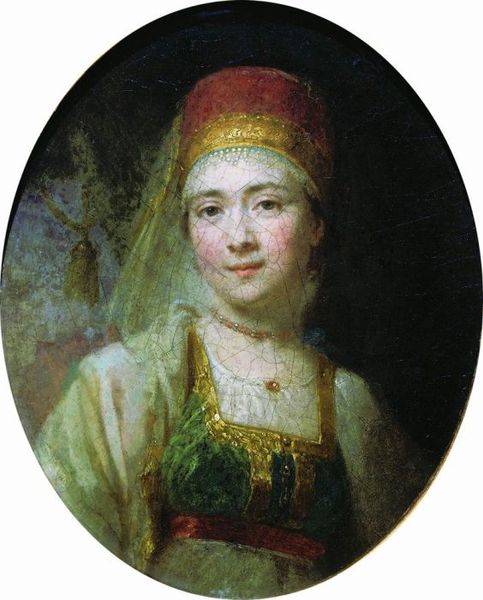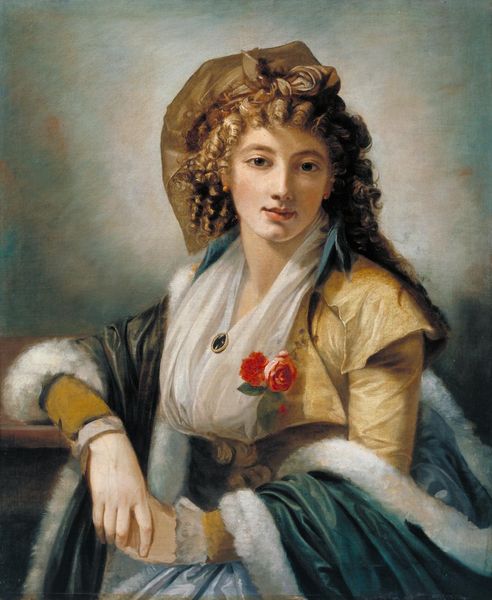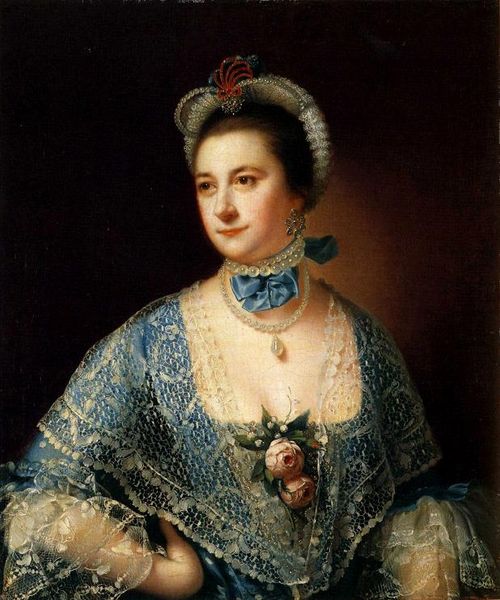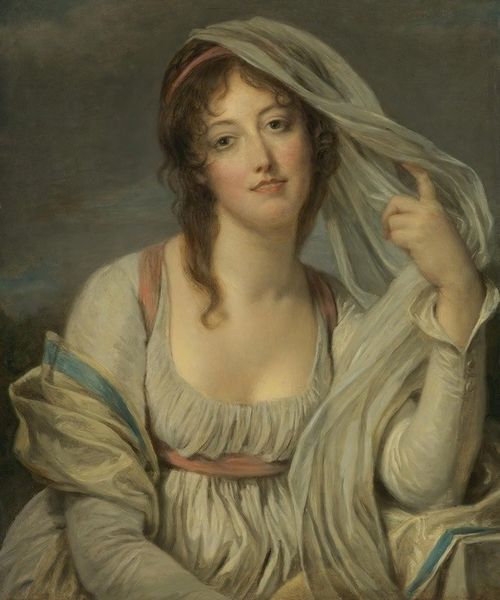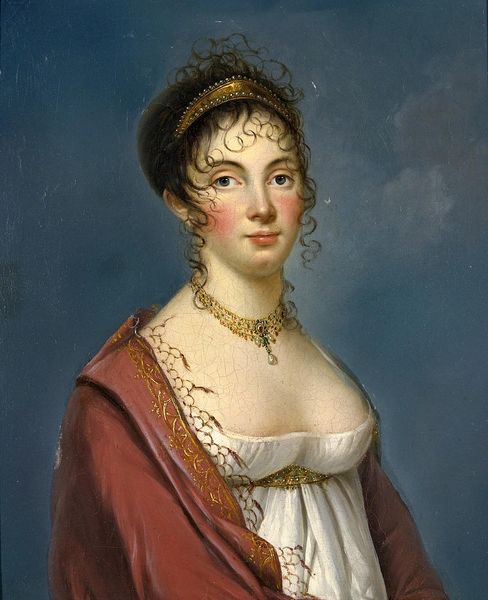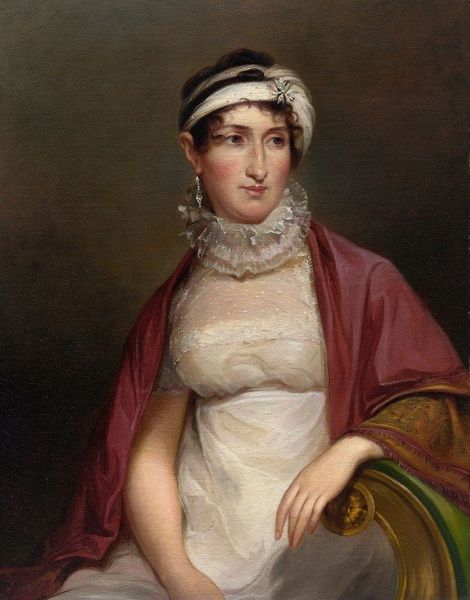
Copyright: Public Domain: Artvee
Curator: Here we have Hugues Merle’s "Marguerite," created in 1878 using oil paint. The canvas portrays a young woman, likely representing innocence or idealized virtue given the style and subject. What is your initial take? Editor: My first impression is of quiet contemplation. The somber backdrop throws the figure into sharp relief. The diaphanous veil hints at fragility, almost as if she might disappear into the shadows if not for the skillful paintwork and carefully rendered light. Curator: Absolutely. Consider the deliberate construction of this piece. Merle employed oil paint in a way that enhanced the delicate texture of her veil. This sheer fabric contrasts nicely against the ornamentation on her dress. It almost demands the viewer reflect on the value ascribed to beauty and clothing as social performance. Editor: The garland of daisies at her bosom strikes me profoundly. They are symbols of innocence, purity, and perhaps a veiled hope or unrequited love. Think of folklore’s “he loves me, he loves me not.” It speaks volumes about idealized femininity in the late 19th century. Curator: I’m intrigued by the dress, an artistic imagining rather than historical recreation. The trim and puffed sleeves might evoke an ideal of female domesticity, but done with clear artistic license; the details are all invented. This points to the consumption and idealization of womanhood rather than reality. The fine painting involved may speak to the professional expectations in his practice. Editor: Indeed, there's a certain artifice, but also a powerful allure. She seems to exist outside time, her gaze both direct and ethereal. Those eyes tell a story, or perhaps invite the viewer to write one. She encapsulates archetypal innocence in romantic portraits. Curator: Perhaps. However, to fully engage, we need to remember its materiality, Merle’s specific labor using particular materials to make the work available to a buying audience. The construction here of “Marguerite” involved not just her character or emotion, but a market relationship too. Editor: Agreed; there are layers of cultural meaning and impact interlaced with the artistic craftsmanship involved in creating her symbolic value. Looking at it with your eye reveals more aspects than my symbolic interpretation originally captured. Curator: And I believe attending to the social reality that inspired and contextualized Merle’s oil painting adds something vital to the work for modern viewers as well. Thanks.
Comments
No comments
Be the first to comment and join the conversation on the ultimate creative platform.

